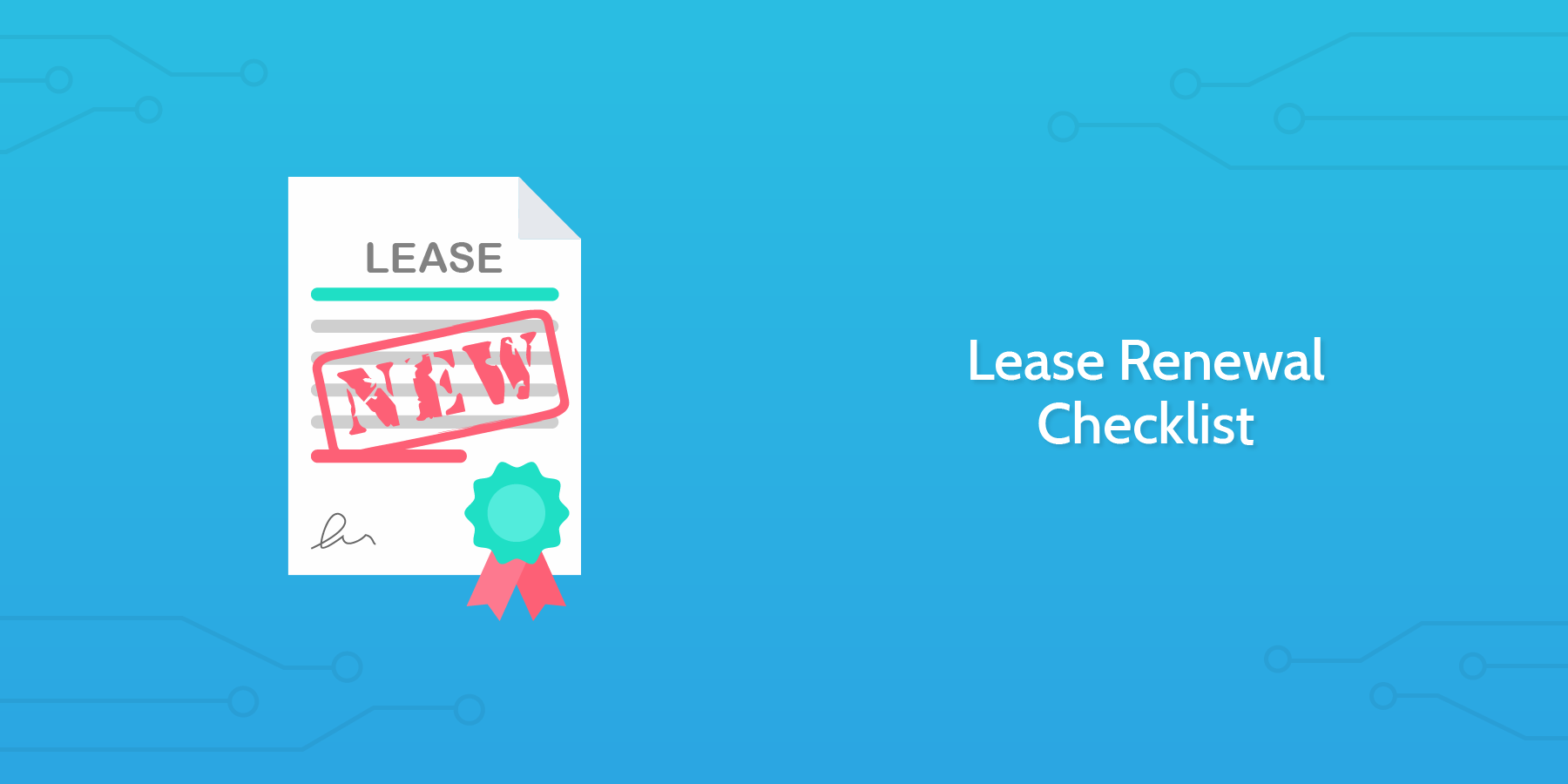
Lease renewals are a core workflow in property management that need to be executed with care and professionalism to get the desired outcome.
As is the case with property management in general, the lease renewal process depends on a series of decisions made by the property manager, property owner, and the tenant which can be unpredictable and demands adaptability on the part of the property manager to avoid delays, frustration, and unnecessary costs.
The dependency on decisions made by owners and tenants means that it is absolutely critical to stay ahead of the game and maintain a consistent flow of communication with both the owner and the tenant to ensure they are comfortable with moving forward, whether that be renewing the lease or vacating the property.
In this post, I’m going to run through the lease renewal process, break down what it involves, explain how a smooth process benefits your property management firm, provide some tips for handling key components like raising rent, negotiating, and evaluating the suitability of month-to-month leases.
Finally, I’ll go through how simple workflow software can streamline the whole process and help you avoid facing challenges that stifle growth, namely having to constantly find, screen and onboard new tenants. Though this is sometimes unavoidable, a formal, documented process that is followed by your team and tracked by managers puts you in the best position to manage the lease renewal process as effectively as possible.
Use Process Street to improve your property management workflows
Before we jump into the fundamentals of the lease renewal process, check out this Process Street webinar where we explain the tips and tricks of using Process Street to manage your property workflows!
Now let’s return our focus to the lease renewal process.
What’s involved in the lease renewal process?

Before the bulk of the communication work begins and the process really gets underway, there are a handful of important decisions that need to be made in coordination with the property owner.
They are:
- Is the property owner happy to offer the tenant a renewal?
- Will the rent price be increased or remain the same?
- Will you be conducting an inspection prior to offering renewal?
- Are you prepared to let the tenant go month-to-month?
These questions need to be answered prior to beginning communication with the tenant so you can feel confident with your position, formulate a game plan for all potential outcomes, and be on the same page as the property owner to avoid any chance of misunderstanding.
Once you’ve answered each of those questions, it’s time to get in touch with the tenant.
If the owner has decided that they do not want to renew the lease, whether it be because they are unhappy with the tenant, want to sell the property or move back in, the process is straightforward as the next step is to inform the tenant of the owner’s decision and send them a notice to vacate.
If the owner is happy to move forward and renew, the next thing is to contact the tenant with your proposal and wait to hear how they would like to proceed.
You should reach out to the tenant at least 90 days before the lease expires. This gives them time to think it over and get back to you in a timely manner.
Ideally, you want a decision from them 60 days before the lease expires so you have plenty of time to find a new tenant if they decide to vacate. It’s also a good idea to tell them you’d like an answer by a certain date to give a sense of urgency.
Once the tenant has made their intentions clear, the process is no longer dependant on decisions and can be completed without unforeseen changes. The remaining tasks will either be to create, send, and receive a completed lease renewal form, or to ensure a smooth move-out, re-list the property, and begin searching for a new tenant.
A simple lease renewal decision tree
The graphic below illustrates the decisions that the process depends on and the necessary course of action for the property manager (PM).
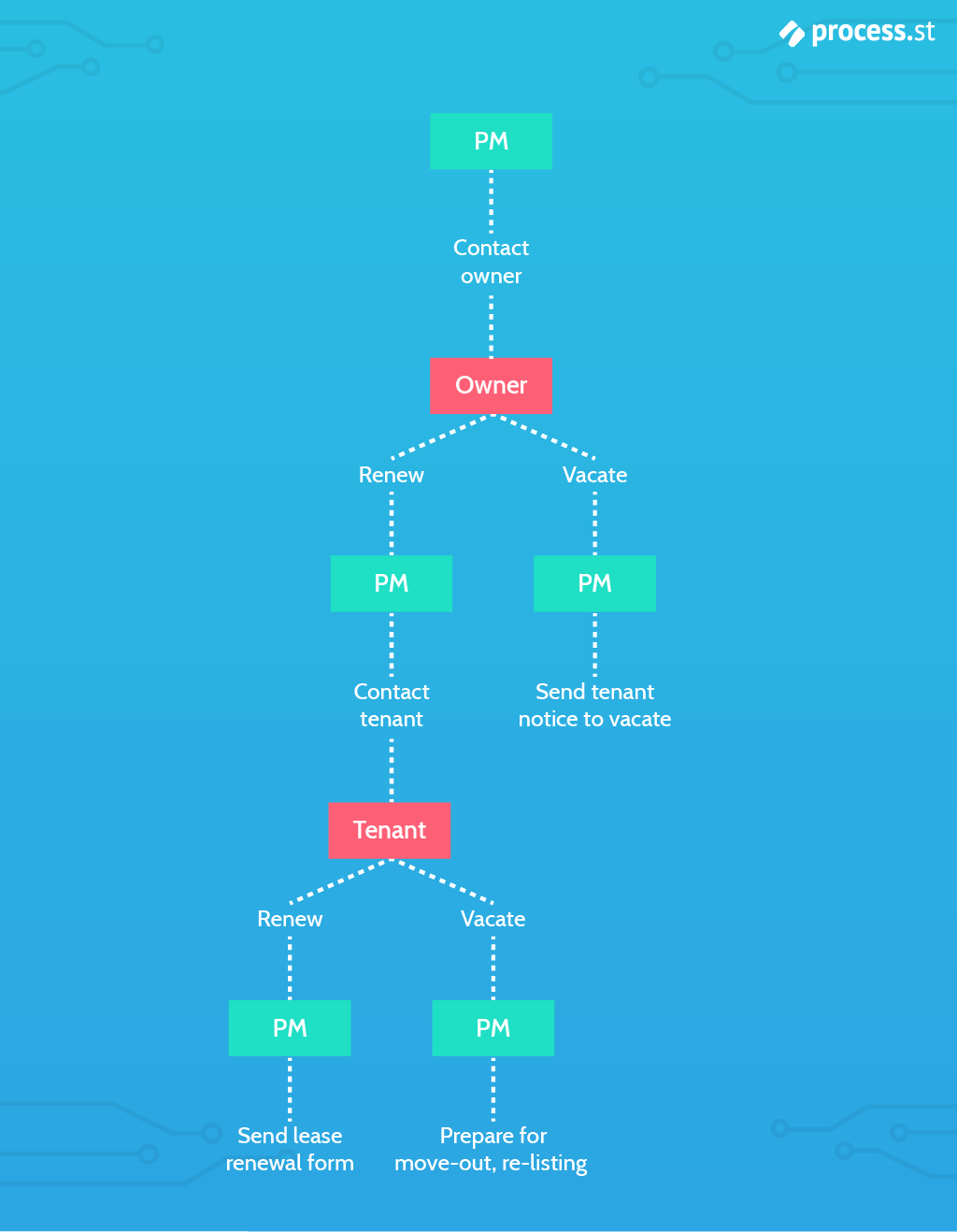
As you can see, there are ultimately 3 potential outcomes of the lease renewal process based on which decisions are made by the property owner and the tenant.
- Send tenant a lease renewal form
- Prepare for tenant move-out and re-listing
- Send tenant a notice to vacate
When beginning the process by contacting the owner, you want to act as fast as possible so you have time to adapt the process depending on if they are happy to renew or would like the tenant to vacate. In the latter case, you simply send the tenant a notice to vacate (typically 30 days) and follow up accordingly.
If they want to renew the lease, then the process moves on to the next variable – the tenants’ decision. Once the tenant has made their decision, it should be smooth sailing to the finish line.
Lease renewals vs month-to-month-leasing
A standard, fixed term lease renewal is always for a fixed period of time, typically 1 or 2 years.
However, some tenants would much rather lease on a month-to-month basis for greater flexibility, especially if they know they will only be living in the property for a relatively short period of time.
Month-to-month leases are not ideal from a property manager or owner’s perspective because they bring with them a level of uncertainty as to when they will need to re-list the property and begin searching for a new tenant. Nevertheless, if a month-to-month lease is signed, either party can end the lease at any time with adequate notice (typically 30 days) which provides a decent window of time to prepare.
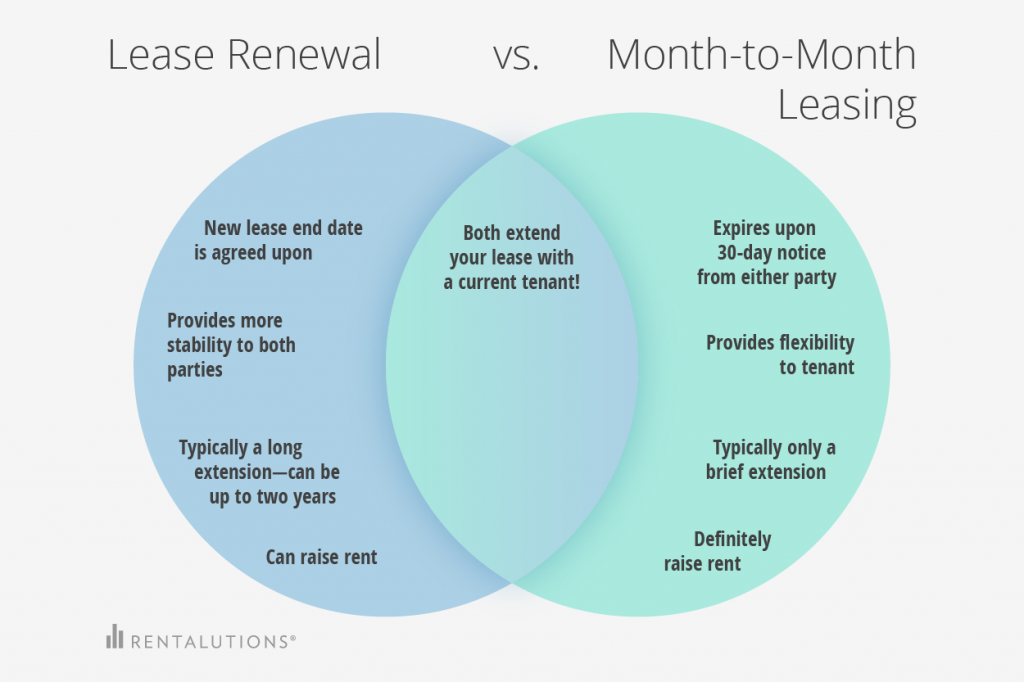
Most property managers would agree with me when I say that if you agree to a month-to-month lease, you should at least strongly consider raising the rent as you are offering the tenant a higher level of flexibility and convenience.
Determining whether or not to raise the rent
One critical decision that is not included in the decision tree as it does not directly influence the outcome is the question of raising rent price.
This decision is to be made by the property manager prior to making initial contact with the owner. Rather than a concrete decision, however, it can be a recommendation that you present to the owner for approval.
If you gain approval and the owner wants to renew with the same tenant, this change must, of course, be stated when presenting the tenant with an offer to renew.
So how do you go about determining whether it should be raised, and if so, by how much?
Well, the most important thing is to do your research, and have data to back up your decision. The tenant may well ask why the rent is being raised, in which case you need to be able to answer with a clear reason supported by credible data.
Start by analyzing the rental market in the surrounding area and see if other properties have increased in price over the past year or two. How do your prices compare?
Then, think about how valuable this particular tenant is and if you would be willing to risk taking on the cost of finding a new tenant, because while you increase revenue potential by raising the rent, you also accept the risk that the tenant may look elsewhere and find a unit for a more suitable price.
How lease renewals benefit your agency
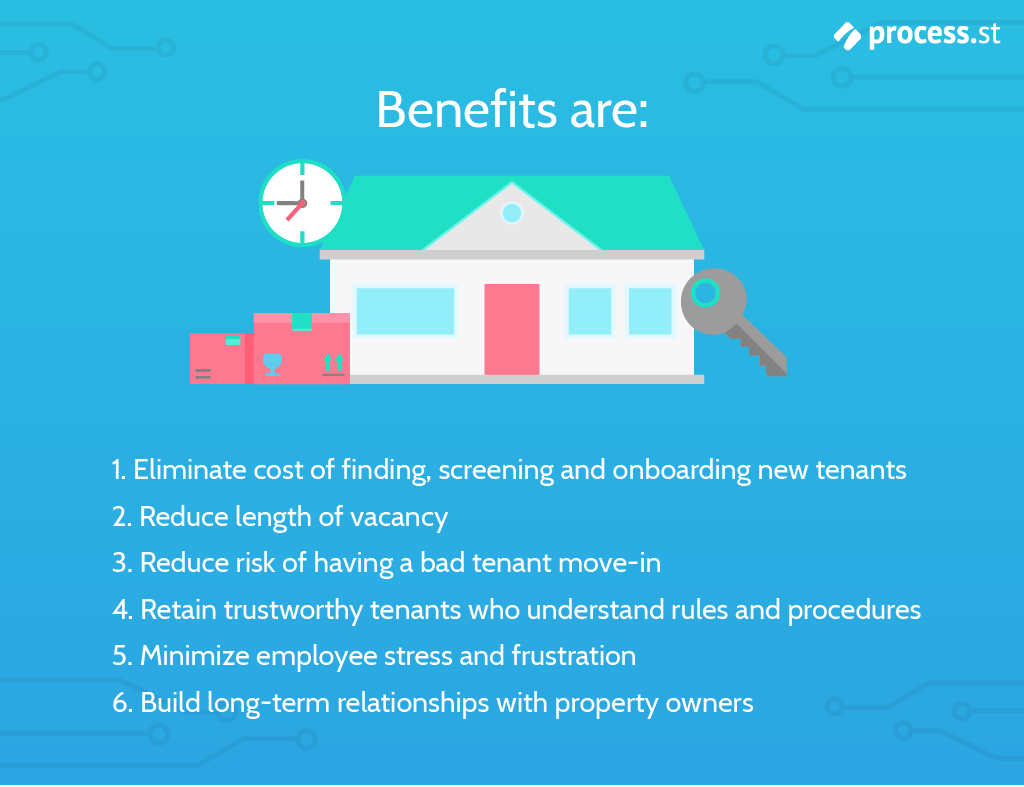
The following are 6 benefits of renewing leases that are important to recognize in order to fully grasp the impact a formal, documented lease renewal process can have on your agency.
1. Eliminate costs
Renewing a lease saves you the cost of finding a new tenant. This involves time and money spent marketing the unit, receiving applications, showing your unit, screening tenants, onboarding, and signing a new lease.
According to Avail, here’s a breakdown of the costs you will avoid by renewing a lease:
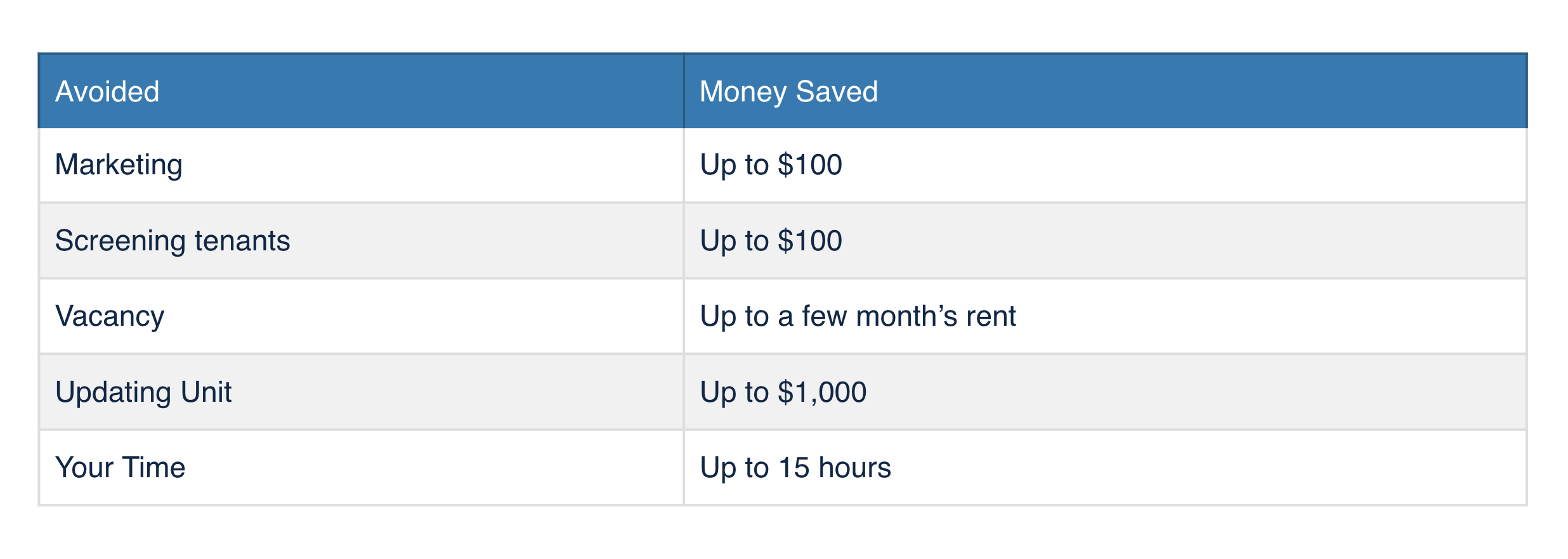
2. Reduce length of vacancy
This is self-explanatory, because obviously when your property is vacant you are not collecting rent but are still paying your mortgage and other expenses such as maintenance.
3. Avoid the risk of having a bad tenant move-in
Even if you have the most comprehensive tenant screening process in place, there will always be the possibility of onboarding a tenant that will prove to be a nuisance, whether it be due to late rent payments, damage to the property, or lack of respect for neighbors.
Renewing a lease eliminates this risk which will give both you and the property owner peace of mind.
4. Retain trustworthy tenants who understand rules and procedures
This point goes hand-in-hand with the previous point.
By retaining existing tenants, you are holding onto those individuals that already understand what is expected of them and are familiar with the rules and procedures they need to follow.
This means that you are significantly less likely to experience difficulties with them in the future.
5. Minimize employee stress and frustration
You may be wondering how a lease renewal impacts employee morale, but this point is referring more to the benefit of having a smooth lease renewal process, which in it itself is more likely to result in a positive outcome.
If agents are having to constantly chase up old conversations, pressure owners and tenants for decisions, and re-list properties because a lease renewal wasn’t executed properly, this may well cause a certain level of stress and frustration that could otherwise be avoided.
By providing your team with the tools and resources they need to get the job done as effectively as possible, employees will be more satisfied with results and motivated to perform at their best.
6. Build long-term relationships with property owners
Demonstrating a consistent ability to renew leases with good tenants is an important aspect of building trusting, long-term relationships with the property owners you represent, particularly if this includes increases in rent.
Although we acknowledge that much of the renewal process is out of the property managers control, if tenants are frequently deciding not to renew, they may begin to wonder if there is an inefficiency on your end that is causing such a low retention rate.
How simple workflow software streamlines the lease renewal process
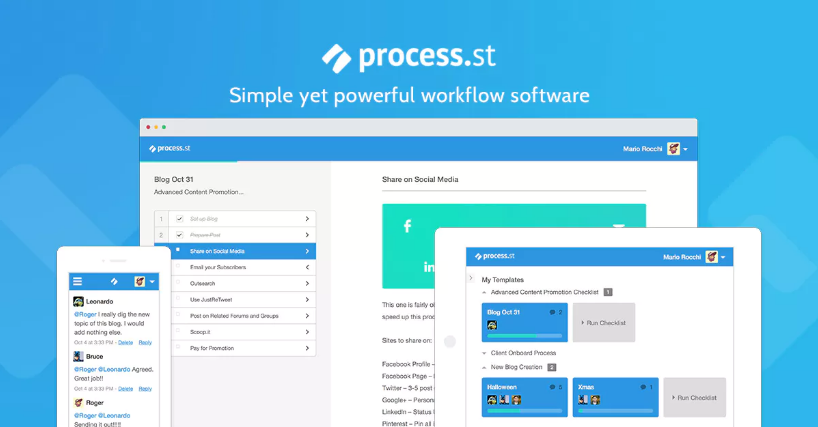
We’ve gone through what’s involved in the lease renewal process, compared it with month-to-month leasing, tackled the question of raising rent, and run-through 6 ways lease renewals benefit the overall performance of your agency.
Now I’m going to demonstrate how a simple workflow software tool like Process Street can help you manage the process more effectively and give you the best chance of retaining good tenants.
Beginning with the simple act of sending the property owner an email to ask if they are happy to renew the lease for property XYZ, the lease renewal process contains a number of tasks in order to see it through to completion.
We know that these tasks are dependant on what decisions are made by the owner and the tenant. Therefore, simply documenting the process on paper or in a tool that cannot update in real-time, is not really enough, and will likely not help your team be much more productive.
On the other hand, by documenting your workflows in digital checklists, you are instantly creating an actionable workflow in which tasks can be assigned to team members, automated, and monitored in real-time to ensure they are being executed as intended, each and every time.
Process Street boasts a rich feature set that enables our customers to create intricate digital checklists that meet the demands of their complex processes.
One feature, in particular, is perfectly suited for lease renewals: conditional logic.
Conditional logic is a powerful feature that allows you to create truly dynamic checklists with if/then logic that adapts to your team’s changing needs as a certain workflow progresses.
When a decision point is reached in your workflow, the process will branch out to different activities depending on which decision is made. That is precisely what conditional logic enables you to do, so the checklists will automatically adapt to the situation as decisions are made.
For example, if you, as the property manager, decide to raise the rent for the new lease, the relevant following tasks like “Send tenant renewal offer” can contain an email template that, due to the fact you stated the rent will be raised, and by how much, will now contain those details automatically.
Another, more simple example is when you hear back from the owner, they’ve said that they would like the tenant to vacate the property. Once you select that decision in the checklist, only tasks relevant to the tenant vacating the property will be included in the checklist. All other tasks that are relevant for a lease renewal, will be hidden and no longer included in the process.
Conditional logic is built-in to many of the checklist templates we’ve created for property managers, including the lease renewal checklist embedded below, so you start exploring its capabilities right away.
It must be noted, however, that conditional logic is a business pro feature only.
The template below has been designed specifically for Appfolio users. We’ve created a set of 5 Appfolio templates and will be creating more in the near future designed specifically for other tools like Propertyware and Buildium.
A couple of case studies for real-life insight
To get a better idea of how property management firms are using our software in real life, check out how Dodson Property Management manages 3500 homes using Process Street.
Also, read about how Alarca Realty, a growing property management firm based in Charlotte, North Carolina, transformed the way they manage their property management workflows by replacing spreadsheets with Process Street.
Both of these agencies use Process Street to track and manage lease renewals.
Over a dozen templates to kickstart your rental processes
In addition to the recently added Appfolio templates, we’ve created a range of checklist templates for property management firms that have been receiving excellent from our users.
Core workflows including tenant screening, property listings, cleaning, inspections, and building maintenance have been built-in these templates and are available for you to integrate into your checklist library right away.
So, in the case that you will not be renewing the lease for a particular tenant, the checklist below might come in handy.
Integrate Process Street with the tools you already use
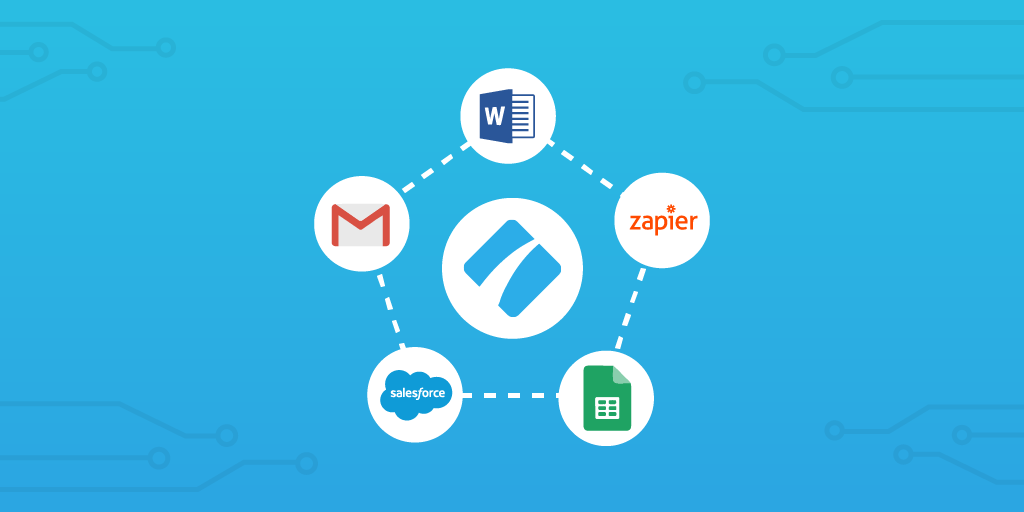
Process Street offers a wide range of automation capabilities through our integration with Zapier that allows you to setup various trigger-based actions to connect our checklists with the tools that you already use.
While we do not yet have any direct integration capabilities with the big real estate software providers like Appfolio, Buildium, and Propertyware, there are still thousands of ways you can streamline interactions between various other applications you use like Gmail, Zoho CRM, LionDesk and Zillow Tech Connect.
You can connect with other tools through Zapier to automate mundane tasks like sharing information with property owners and tenants and saving files so you can stay focused on the important, human component of managing a lease renewal.
What measures do you and your team currently take to manage lease renewals as effectively as you can? What kind of communication techniques do you find work best? Let me know in the comments below







 Workflows
Workflows Projects
Projects Data Sets
Data Sets Forms
Forms Pages
Pages Automations
Automations Analytics
Analytics Apps
Apps Integrations
Integrations
 Property management
Property management
 Human resources
Human resources
 Customer management
Customer management
 Information technology
Information technology



Alex Gallia
Alex is a content writer at Process Street who enjoys traveling, reading, meditating, and is almost always listening to jazz or techno. You can find him on LinkedIn here